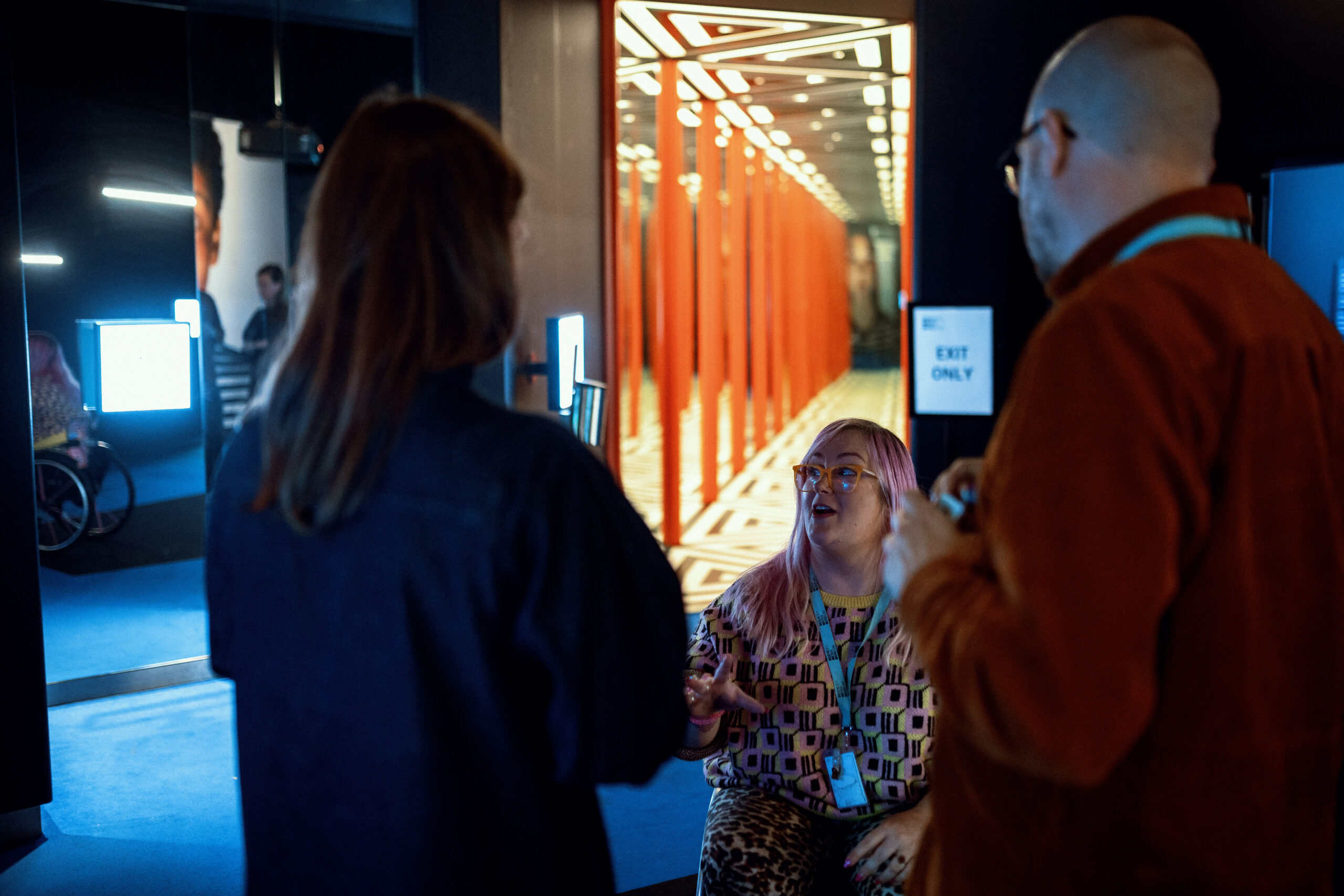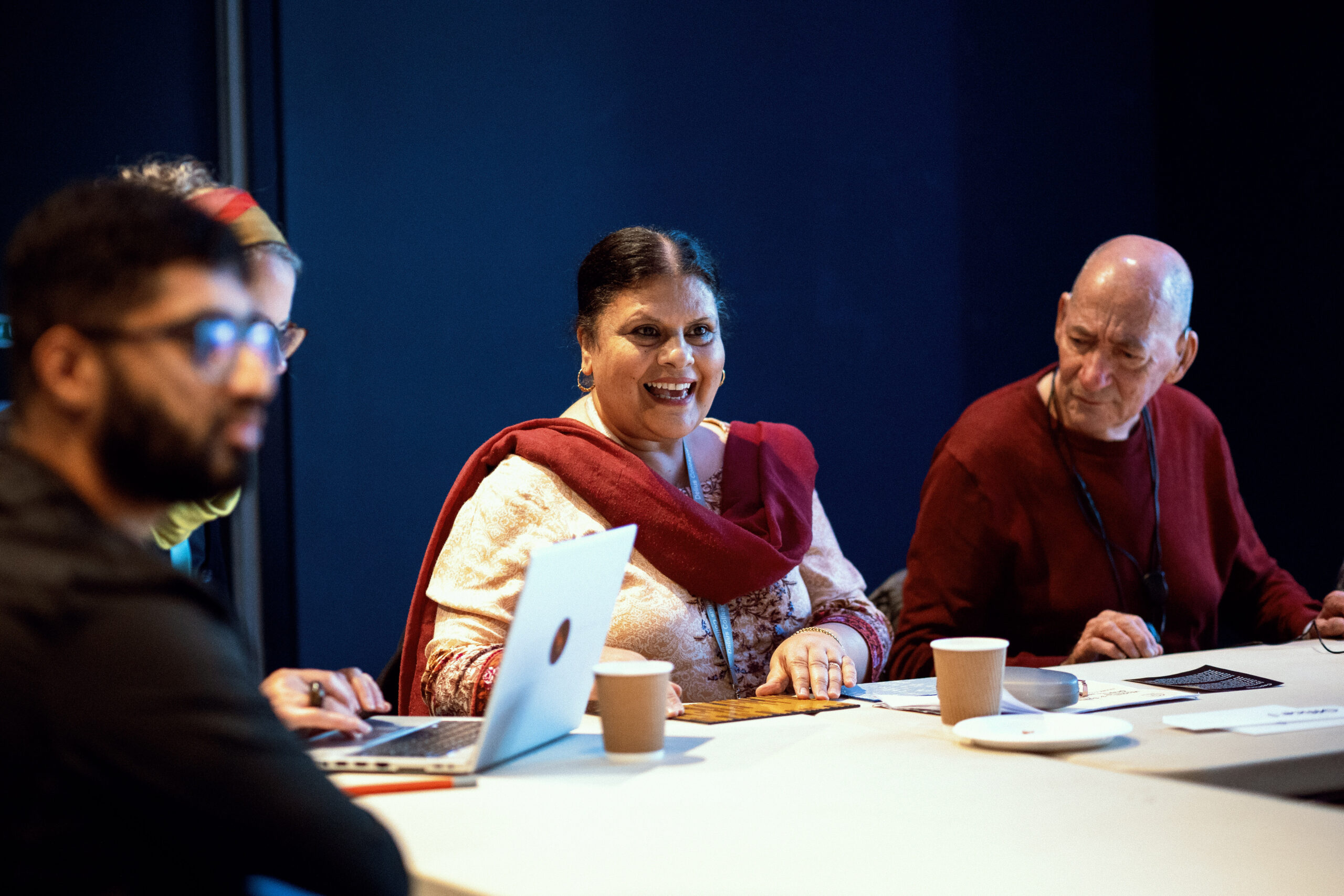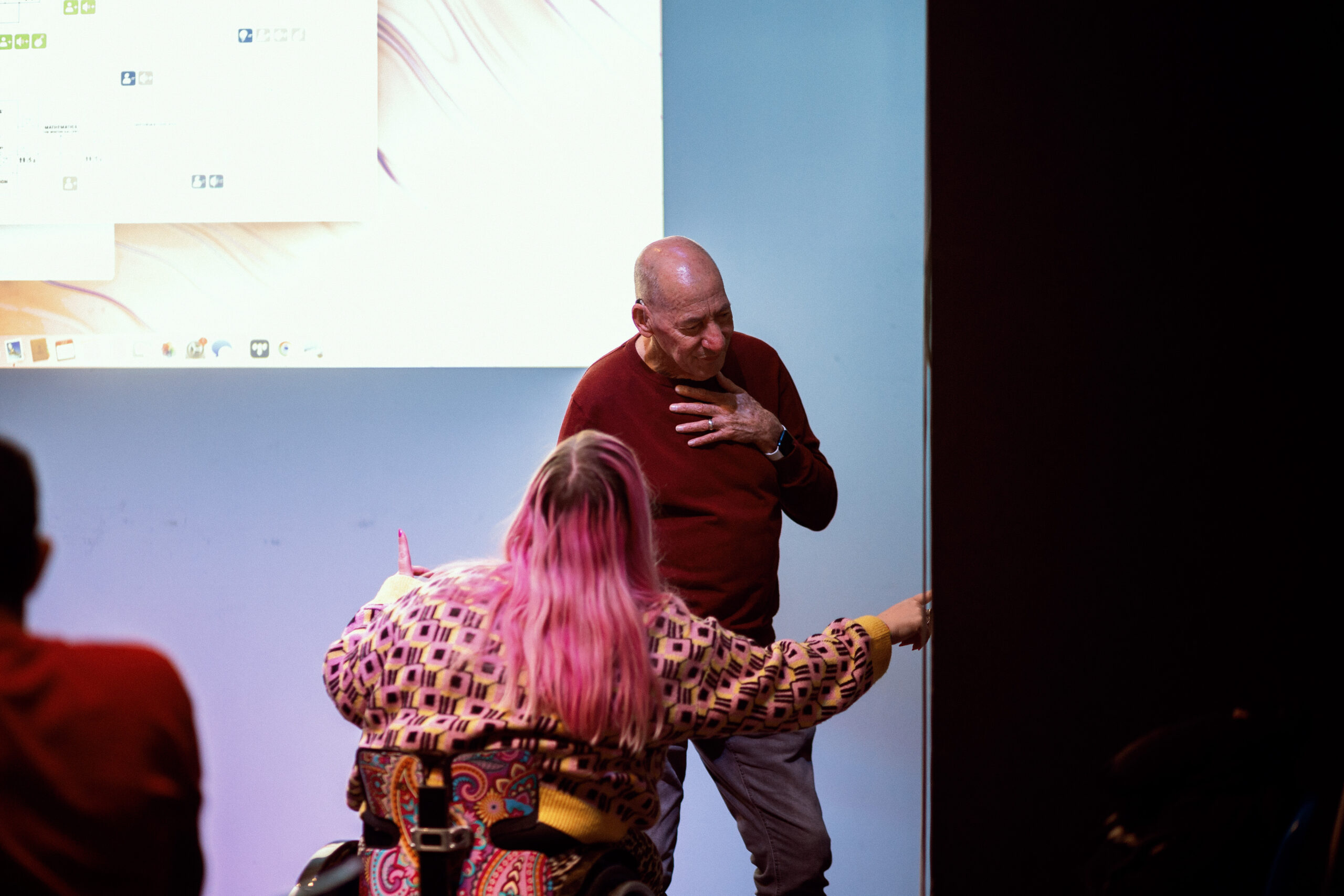Consultation has been key to the Sound and Vision project and as part of the development of our new permanent galleries, we have been working closely with communities to help inform the stories we tell, how these will look and feel, and how visitors will experience the galleries.
Hi Emily, thanks for speaking to us today. Can you start by telling us a bit about yourself and your background?
I’m Emily Yates, Head of Accessibility and Inclusive Design at a design agency called Mima. We’re a multidisciplinary design agency, so as well as an accessibility team, we have teams focusing on wayfinding, service design, and human factors and ergonomics, so we bring lots of different strands and ways of thinking and working into what we do. We work in lots of different sectors, including travel, transport, tourism, culture, heritage and global events. I’m a wheelchair user with cerebral palsy, so I bring that lived experience of disability into the work that I do every day.

Have you worked with many museums before working with the National Science and Media Museum?
Yes, I first started out working with the Science Museum Group as the accessibility consultant to the National Railway Museum on their masterplan strategy, which is still ongoing. We’ve just finished working on their Wonderlab, which is now open, and we’ve got numerous other projects going with them. I’m also working with the Science and Industry Museum in Manchester on their Power Hall project.
So, we’ve got a lot of work with SMG at the moment and we also have experience working with several other museums, such as the Maritime Museum and Cutty Sark.
Are there any dream places you’d like to work?
I’d love to work with the Kelvingrove in Glasgow. I’d also really like to do some work around the future viewpoints of inclusive design. I recently went to Dubai for some work and visited the Museum of the Future, which was incredible, but I’d love to see what the future of inclusive design looks like and work on an exhibition for that.
What are some of the greatest accessibility challenges people face when visiting museums or other visitor attractions?
That’s a great question. I think really it depends on the impairment and the access requirement that you have. But I think for the majority of disabled people and people with access requirements, really what needs to be realised is that those requirements happen before somebody visits. Quite often museums focus really well on making their entrances and the reception desks and gift shops and cafes accessible, and don’t necessarily focus on the information that they put on a website to prepare somebody, to give them that familiarisation that will actually make them decide this is the place for me and yes, I’m going to visit.
So, everything from noting when you’ve got British Sign Language tours happening, to a sensory map being available online showing where lighting is good, poor, whether there are noises, crowds, smells, those kind of things. And just having a bit of a general guide in terms of accessibility, for example, where your toilets are, where the best step free entrance is, what the local transport options are, all these things are incredibly helpful. I would say in general that most museums do a good job when somebody’s actually there, but in terms of getting them there, I think that needs to be the next step really.
And what do you think are some of the biggest opportunities for these spaces?
I think one of the things that excites me most about the opportunity and the potential for museums is how they can change perspectives on the representation of deaf and disabled people. Whenever I work on a particular exhibition within a museum, I’m always thinking about the importance of accessible interpretation for disabled visitors and colleagues. But just as importantly, how are we telling the stories of deaf and disabled people to allow somebody who’s not disabled to build that knowledge, build that empathy and change their mindset around disability?
I think museums are such a great hub and a catalyst to allow that to happen, so that’s really exciting.
Is there an example of a visitor attraction that you’ve been to that you feel is really leading the way in this area?
I recently visited the Wellcome Collection and what they do in terms of accessibility is really great, including having an access hub where you’ve got portable stools, you’ve got BSL interpretation, you’ve got all the guides in terms of large print, easy read, all of that stuff is brilliant.
But back to a previous answer, what Wellcome did which I thought was amazing, was look at particular products or inventions using a narrative around disability and accessibility as part of that.
Can you tell us a bit about the work that you’ve done so far with the National Science and Media Museum?
I’m working as the accessibility consultant for the Sound and Vision galleries and there are two separate parts within my scope of work. Firstly, I’m working with the design team, which includes the gallery designers Agents of Change, the architects, and other consultants, to make sure that whatever’s in the galleries, whether it’s seating, tactile objects, or BSL interpretation, is reviewed from an inclusive design perspective. It’s also my job to ensure that the gallery is accessible from the built environment point of view and that ultimately, disabled visitors going to the galleries will be able to interact and engage with a lot of different elements.
The second part of my work is the Access Panel. We’ve recruited and facilitated a lived experience user group with six local members from around Bradford who have different impairments and access requirements. Every couple of months we meet with that group and a different person presents to us, so whether it’s the architect or the digital producer, they talk about the updated design, about the direction we’re going in and ask for the group’s feedback.

We then take that information away and use it to improve and better the galleries. Through the panel we’ve been able to input into the general built environment design, but also look at graphics and interactives and how they can be made inclusive and that’s been really brilliant.
Are there any examples of the sort of feedback that has come out of the panel that will be implemented in the new galleries?
So, the colour themes for the different areas of the galleries and the palettes have all been adapted and changed from the feedback of that lived experience user group. How we look at tactile signage and interpretation has all been amended because we’ve printed things out as practice runs and asked the members of the group to physically feel those and see if they’re able to read different bits of information.
We’ve also run through different interactives and got feedback from the group. One example of an interactive is the gig zone, where you can experience what it’s like to be a sound engineer at a festival and figure out how to change different elements to make a gig more interesting and enjoyable. And one thing that we’ve had to work out is, if you are blind or partially sighted for example, how can you use this mixing desk from a tactile or contrast perspective? And if you are profoundly deaf, how can we make sure through vibration or through visual output that you are able to engage with that activity as well?
Has there been anything from the panel that’s really surprised you?
I think one thing that’s really impressed me about the group is how they’ve all worked together and created this wonderful rapport with each other. We’re all coming into the same room with very different access requirements, and we’ve had open discussions where we’ve really talked about what different individuals or different groups of people might need and how in understanding the constraints of the design, we will be able to come to some compromise.

One thing that I’ve really loved about facilitating this group is yes, we have ideal standards and aspirational goals, and we reach those wherever possible. But at the same time, there’s been a real, practical, and pragmatic understanding that we all want to do the best that we can do, and sometimes reaching that absolute ideal just isn’t possible. So, what can we do to make the best situation we possibly can for every single visitor that comes to the museum? And the group have really got on board with that narrative, and it’s led to a richer result in the long term.
The Sound and Vision Project accessibility works have generously been supported by David Family Foundation, Sovereign Health Care and Spectacle Makers Charity.